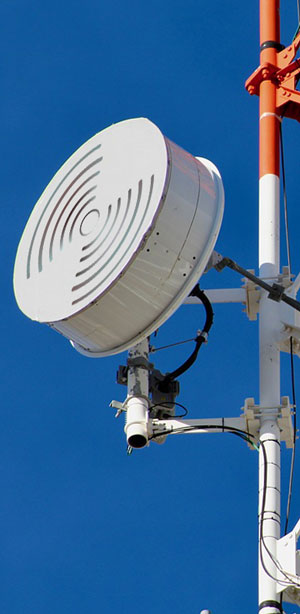You need a significant amount of bandwidth to run your business systems, including telephony, conferencing, and business process software in the cloud. Usually this is called a fiber optic connection. But what if the fibers are cut (it happened) or they can't be installed right away or they are too expensive to manufacture? So how? If you're in the right area, a stable wireless connection might be your best bet.
 What is fixed wireless?
What is fixed wireless?Cell phones have brought mobility to all of us, including having a cell phone and a small computer in your pocket. This is wireless navigation. Each device has a modem and a radio that connects to the nearest cell tower. As you move, you will continue to approach the next tower as the session progresses. All this is invisible to you, the user. The complexity of managing cellular signals is hidden in the cellular network.
You may have connected your phone to your computer to keep it turned on when you disconnect your landline or cable Internet service. This is an example of a wireless landline phone. It's similar to cellular wireless, but you don't move.
Stay mobile without wires
Ideally, you want the entire network to connect to your phone during a power outage, not just your computer. Some phones allow this by acting as a Wi-Fi hotspot. In a small business, you can find this job well for a short period of time. Not being able to get away from your phone can be a huge inconvenience. Running out of minutes and interrupting or overloading can cause even greater inconvenience.
Fortunately, there are special cellular services designed for this use. The box you get is very similar to a Wi-Fi router. It has a better antenna than your phone, an ethernet jack to power your network, and possibly built-in WiFi routing. It is intended to install the antenna outside in some areas with weak signal.
After all, only business cellular wireless services know you can't shell out a few gigabytes a month. You can order 100 GB and more, up to unlimited use (within reasonable limits). Services include 4G LTE and now 5G to give you the speed you need to run your business.
Fixed Wireless Microwave
The big brother of mobile is the fixed wireless point-to-point microwave. This is a modern version of the old point-to-point microwave relay for communications. You will find a small dish or other microwave antenna attached to the side of your building or placed on the roof. Directs the antenna of the feeder to its central position. It is a viewing service and is generally limited to urban areas
The main advantage of this type of service is that it is intended for personal and commercial use. You will not compete with other people's phones for bandwidth. The bandwidth can be up to 1 Gbps or even 10 Gbps. It can be cellular, symmetrical. With many services, upload and download speeds are the same and your bandwidth is guaranteed. usage limit? Usually there is no problem.
You can even think of fixed wireless microwaves as optical fibers without fibers. Getting rid of the physical fibers means fewer headaches and construction delays. It is possible to install service in days rather than weeks or months if your building does not already have fiber lighting.
An unexpected advantage is that a fixed wireless connection can have lower latency than fiber services with the same bandwidth, because the wireless signal is sent directly from the provider to the user. The fiber system is spread all over the city with many switches along the way. Low latency is important for some companies, especially for financial transactions. This is a feature for improving the quality of VoIP phone calls, video conferencing and for interactive operations running in the cloud.
The use of mobile broadband internet and any delays and bottlenecks there. Fixed wireless networks can bypass the Internet and its limitations or stay connected to the Internet so you can easily connect with customers and suppliers.
Why is it not better than fiber and wireless?
Perhaps the best solution for your business is to combine fiber optic service and fixed wireless service. Why both? One reason is to quickly get started with fixed wireless service and then add fiber when it can be installed.
After using both, consider keeping your wireless network stable as a fiber backup. Fiber failure, which is often caused by cables being cut during unrelated construction work, can take days to fix, leaving you tired and dry. By installing automatic failover, your traffic will simply flow over the wireless link without interruption. When the fiber is back online, the system is active again.
Note that wireless still provides real diversity in fiber paths. This means that fiber and wireless are less likely to fail at the same time. Some companies think they get it by ordering redundant fiber lines or even fiber services from separate suppliers. What they don't realize is that all the fibers serving their site run in the same beam or channel and can be accidentally pulled at the same time.
Need a quick setup of a high-speed business connection and/or a robust fiber backup you already own? Consider microwave fixed wireless service for your bandwidth needs.

Tidak ada komentar:
Posting Komentar